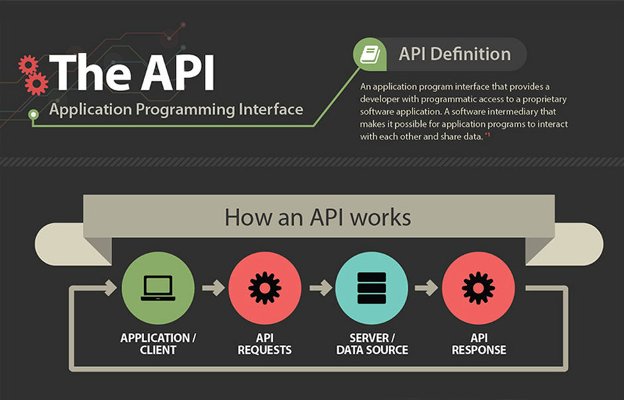
What is an API?
Application Programming Interface is a software intermediary that makes it possible for application programs to interact with each other and share data. APIs let your product or service communicate with other products and services without having to know how they’re implemented. Also they help business and IT teams collaborate more efficiently.
When you use an application on your mobile phone, the application connects to the Internet and sends data to a server. The server then retrieves that data, interprets it, performs the necessary actions and sends it back to your phone. The application then interprets that data and presents you with the information you wanted in a readable way. This is what an API is – all of this happens via API.
Here is an example to make it clear and easily undersatndable.
Imagine you’re in the restaurant, sitting at a table with a menu of choices and ready to order. The kitchen is the part of the “system” that will prepare your order. What is missing is the critical link to communicate your order to the kitchen and deliver your food back to your table. That’s where the waiter i.e. API comes in. The waiter is the messenger – or API – that takes your request or order and tells the kitchen – the system – what to do. Then the waiter delivers the response back to you; in this case, it is the food.
An API, often described as any sort of generic connectivity interface to an application, also provides a layer of security to all users on both sides. Each one of them communicates with small packets of data, sharing only that which is necessary, putting owerall security issue on the higher level.
Nowdays API has taken on some characteristics that make them extremely valuable and useful if exposed to partners or the public:
- Create new revenue channels or extend existing ones.
- Expand the reach of your brand.
- Facilitate open innovation or improved efficiency through external development and collaboration.
Current APIs go along
with standards (typically https and REST), that are easily accessible,
understood broadly as well as developer-friendly.
They are designed for consumption for specific audiences (e.g., mobile
developers), they are well documented, and they are versioned in a way that
users can have certain expectations of its maintenance and lifecycle.
Because they are much more standardized, they have a much stronger discipline for security and governance, as well as monitored and managed for performance and scale. As any other piece of productized software, the modern API has its own software development lifecycle (SDLC) of designing, testing, building, managing, and versioning. Also, modern APIs are well documented for consumption and versioning.
For highly performant and standards compliant APIs development and implementation call the experts – the Clearstone team.